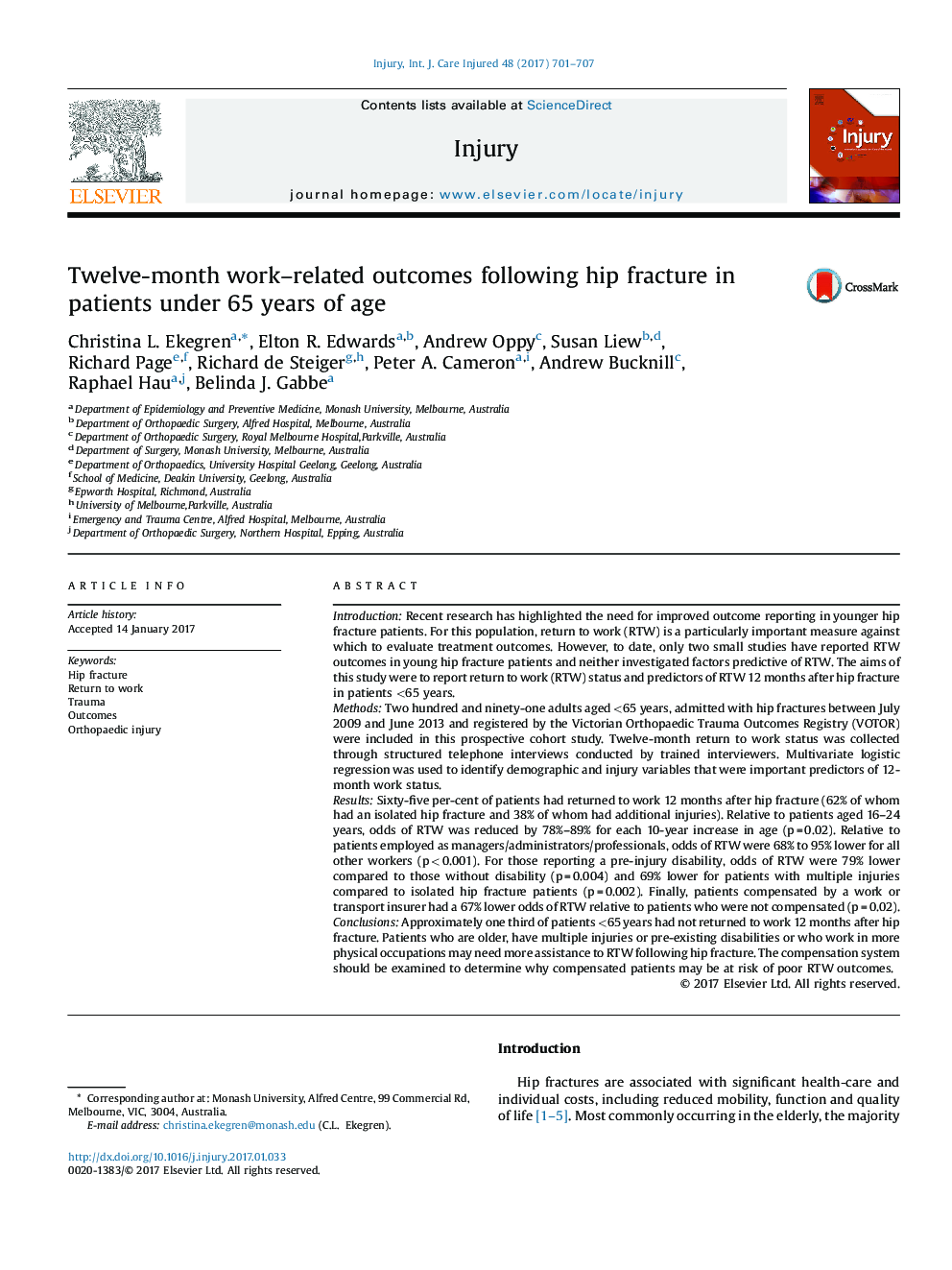| کد مقاله | کد نشریه | سال انتشار | مقاله انگلیسی | نسخه تمام متن |
|---|---|---|---|---|
| 5652664 | 1407223 | 2017 | 7 صفحه PDF | دانلود رایگان |
IntroductionRecent research has highlighted the need for improved outcome reporting in younger hip fracture patients. For this population, return to work (RTW) is a particularly important measure against which to evaluate treatment outcomes. However, to date, only two small studies have reported RTW outcomes in young hip fracture patients and neither investigated factors predictive of RTW. The aims of this study were to report return to work (RTW) status and predictors of RTW 12 months after hip fracture in patients <65 years.MethodsTwo hundred and ninety-one adults aged <65 years, admitted with hip fractures between July 2009 and June 2013 and registered by the Victorian Orthopaedic Trauma Outcomes Registry (VOTOR) were included in this prospective cohort study. Twelve-month return to work status was collected through structured telephone interviews conducted by trained interviewers. Multivariate logistic regression was used to identify demographic and injury variables that were important predictors of 12-month work status.ResultsSixty-five per-cent of patients had returned to work 12 months after hip fracture (62% of whom had an isolated hip fracture and 38% of whom had additional injuries). Relative to patients aged 16-24 years, odds of RTW was reduced by 78%-89% for each 10-year increase in age (p = 0.02). Relative to patients employed as managers/administrators/professionals, odds of RTW were 68% to 95% lower for all other workers (p < 0.001). For those reporting a pre-injury disability, odds of RTW were 79% lower compared to those without disability (p = 0.004) and 69% lower for patients with multiple injuries compared to isolated hip fracture patients (p = 0.002). Finally, patients compensated by a work or transport insurer had a 67% lower odds of RTW relative to patients who were not compensated (p = 0.02).ConclusionsApproximately one third of patients <65 years had not returned to work 12 months after hip fracture. Patients who are older, have multiple injuries or pre-existing disabilities or who work in more physical occupations may need more assistance to RTW following hip fracture. The compensation system should be examined to determine why compensated patients may be at risk of poor RTW outcomes.
Journal: Injury - Volume 48, Issue 3, March 2017, Pages 701-707
